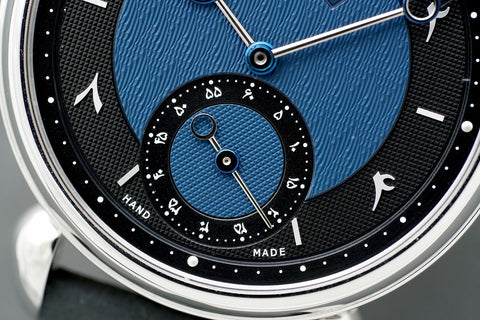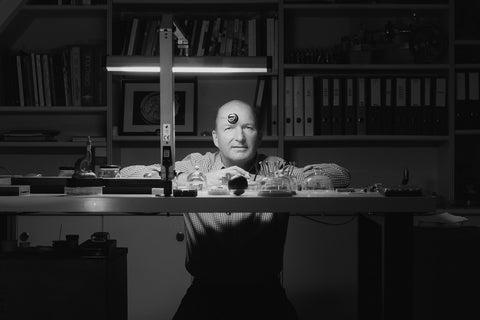Released in 2020 as part of a limited, 10-piece collaboration between Urban Jürgensen and A Collected Man, the proceeds from the original sale of this "London Edition" went towards research on COVID-19. We are thrilled to reoffer this piece for sale on behalf of the original owner.
You May Also Like
The Art of Dial Finishing
The dial. It’s the face of the watch, the element of the timepiece we look at most often, and the component that we form an emotional attachment to. Just a few microns thick, these watch dials carry the distinctive styles of each watchmaker, acting, in many senses, as the face of the brands themselves.
Alongside the different forms of movement finishing, watchmakers through the ages have paid equal attention to the techniques used in dial finishing. After all, without the dial and its varying ticks, indices, windows, and sub-dials, the gears and springs of the movement remain uninterpretable to the untrained eye. Like many other aspects of watchmaking, these dial finishing techniques lie at the intersection of art, human skill, and engineering. Before an artisan begins shaping a dial, it is a mere metal “blank” of highly polished brass, silver, or other metal.
The application of finishes then adds texture, pattern, and structure to the dial, transforming the unmarked metal into a work of art through a combination of artistry and innovation. Techniques such as guilloché have existed for centuries, they have been carefully handed down from one to the next, with the current generation just as proud to carry on the tradition as they are keen to ensure it is passed on.
While engine turning flourished through the middle of the 20th century, it nearly became extinct by the 1970s, as changing tastes and then the quartz crisis decimated the practice. However, it saw a slight revival in the ‘80s and ‘90s, with practitioners like George Daniels pushing the art into the modern era.
Now, modern artists are ensuring the art and technique is practiced and passed on to another generation of artisans and watchmakers. At the forefront of this movement is Josh Shapiro, a watchmaker based in Los Angeles, California, and founder of J.N. Shapiro Watches.
“Engine-turning is a fascinating combination of art, skill, and machine technology. All three of these need to persevere for engine-turning to survive”
















































































































































































































